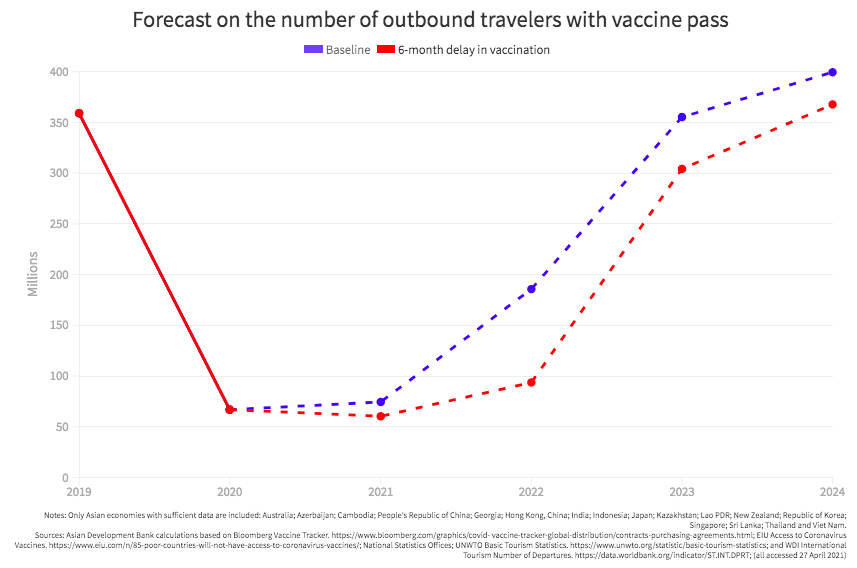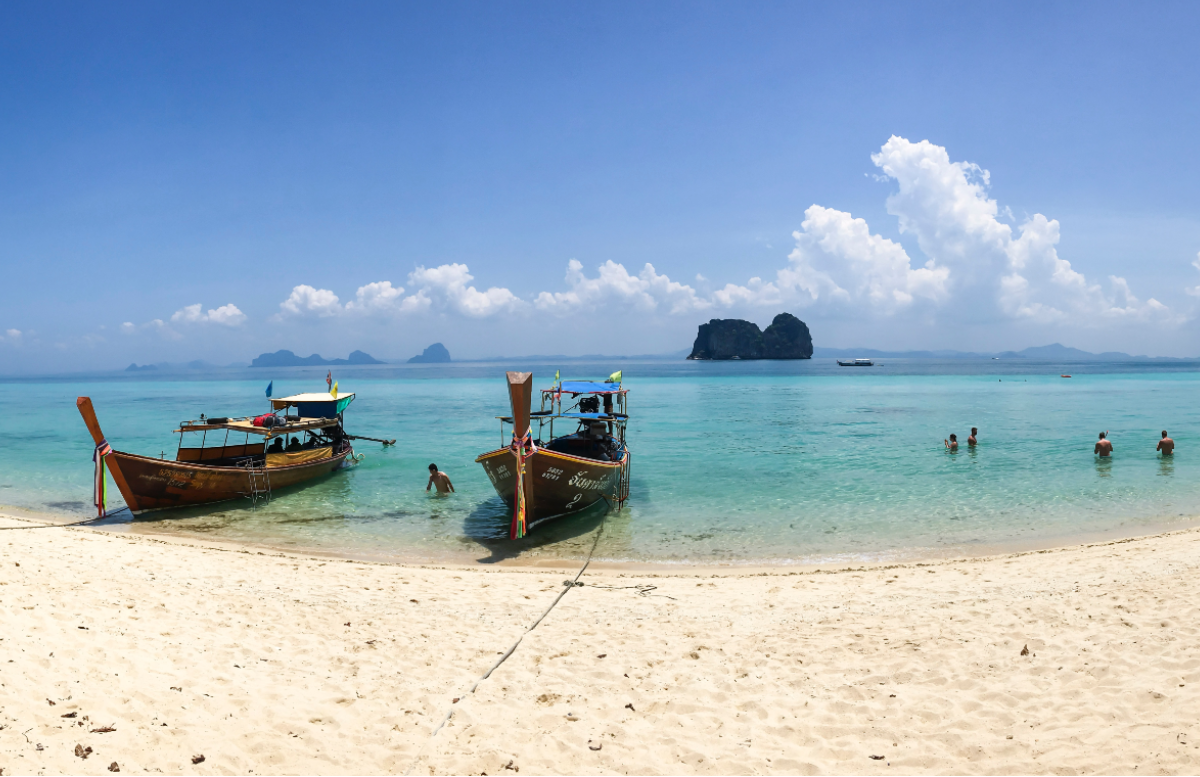Vaccinations will not lead to vacations
The hope is that the vaccination will allow for a full return to economic activity and recovery. When it comes to international tourism, the prospects for a quick recovery remain very uncertain.
Vaccination programs and travel bubbles are still in their infancy. They could help revive tourism in Asia and the Pacific but governments need to pave the way with the right policies.
Countries around the world are undertaking enormous efforts to vaccinate against COVID-19. The hope is that the vaccination will allow for a full return to economic activity and recovery. When it comes to international tourism, the prospects for a quick recovery remain very uncertain.
Regional or international agreements on vaccine passes are still lacking. Current travel bubbles between places with low COVID-19 risks are rare and fragile. Going forward, countries need urgently to come together to establish harmonized protocols that ease international travel. International travel is not only important for the tourism sector, but for international business and cooperation in general.
The introduction of COVID-19 vaccines in December 2020 raised hopes that vaccine passes could help accelerate the recovery of the travel and tourism sector. As long as vaccines would provide sufficient immunity and avoid transmission, it was expected that it would allow travelers to move across borders without lengthy quarantine and testing requirements.
To gauge the possible effect of vaccination on international travel in Asia, we conducted a simulation exercise. Under the assumption that vaccine passes would be implemented and allow vaccinated people to travel to the same extent as before the pandemic, the tourism sector is expected to recover by 2023, at the earliest. Furthermore, our research found that a six-month delay in the vaccination roll-out would postpone the recovery of the tourism sector by a full year.
| The days of tourists relaxing on the beaches of Asia and the Pacific will return sooner if governments implement forward-thinking vaccine policies. Photo: Wojciech Portnicki |
The recovery is also expected to be uneven, both in terms of outbound and inbound travelers. People from economies with fast and successful vaccine roll-out will probably be the first to travel en masse again. Likewise, economies that have achieved a faster widespread vaccination would more likely be the first to open their borders for international tourism.
This is based on several assumptions, most importantly, that vaccine passes would be immediately available and allow for international travel. However, intergovernmental efforts to introduce vaccine passes have not yet led to the introduction of vaccine passes in Asia, except for a few new cases. For example, the Immunitee health passport of Malaysia is recognized by Singapore. At the regional level, Association of Southeast Asian Nations’ leaders discussed the possibility of a common digital vaccine certificate in early March 2021.
Given this outlook, substantive additional efforts of bilateral and regional cooperation are urgently needed to facilitated travel across borders:
Agree on harmonized protocol for vaccine passes regionally. Even though advances in vaccination in the region are unequal, Asia needs to urgently come together to develop a common vaccine protocol for cross-border travel. A common travel pass should be easy to use, fraud resistant, and available digitally.
Existing regional integration efforts, such as trade deals and technical agreements, could offer a platform for countries to negotiate. Apart from easing travel substantially, offering a common vaccine passport provides people with an additional incentive to become vaccinated.
Continue to allow entry for travelers without vaccine passes. As the vaccination programs are expected to take years to finish, entry into a country should continue to be possible for unvaccinated travelers. To facilitate travel, quarantine protocols should be harmonized across the region. For example, the testing requirement prior the trip and during the quarantine vary widely across the region. Common standards would facilitate the planning of the trip and provide predictability for all actors in the sector.
We know from recent surveys that tourists are putting a higher priority on health issues and safety measures than before. For example, a recent survey by the International Air Transport Association (IATA) indicates that 88% of passengers are willing to undergo a COVID-19 test as part of the travel requirements and 84% think a COVID-19 test should be required of all travelers. Common health protocols should reflect this increased wish to have high health standards.
Fully use digital technologies for contact tracing. Contact tracing has been found to be highly effective in fighting the pandemic as experience in the Republic of Korea and the People’s Republic of China shows. Contact tracing should be made possible across borders. To reach this objective, it is crucial that governments adopt digital technologies that not only accurately track movement of people and meet data security and privacy standards, but that also allow an interface of exchange across countries.
Merge travel bubbles with vaccine passes. In recent months, another form of international travel has emerged: travel bubbles between places that are largely COVID-19 free. This includes bubbles for Australia-New Zealand; Singapore-Hong Kong, China; Singapore-Malaysia; and Singapore-Australia. Governments need to coordinate how to integrate these bubbles with vaccine passes.
Asia and the Pacific should take the lead. Harmonizing standards on a global scale will take time. In the meantime, groups in Asia and the Pacific should work together to develop regional best practices and protocols. A unified stand and stringent guidelines on how to implement the digital vaccine passes and other COVID-19-related travel measures would contribute significantly towards the success of the tourism recovery plan. It will also ease international business travel, which enables faster recovery of international economic cooperation.
Vaccine rollouts will be a time-consuming process both regionally and across the globe, but there are actions that can be taken now that will make them more effective in opening up tourism and travel. That could speed the economic recovery from the pandemic that the region desperately needs.
Authors:
Matthias Helble and Won Hee Cho are senior economists at ADB.













